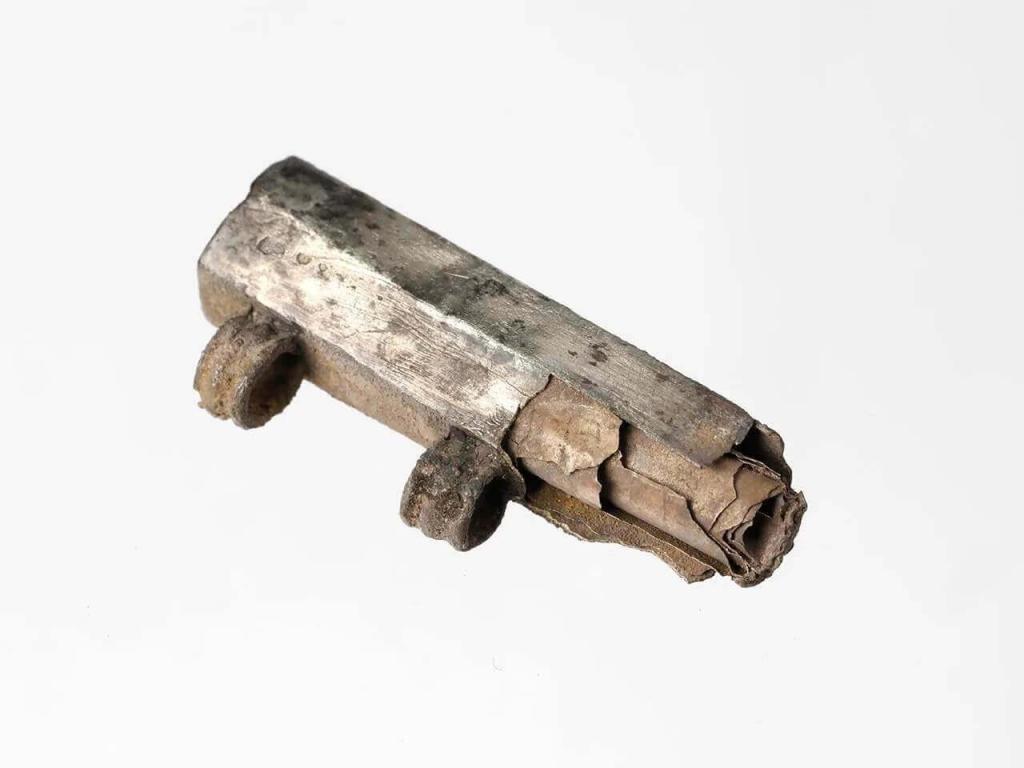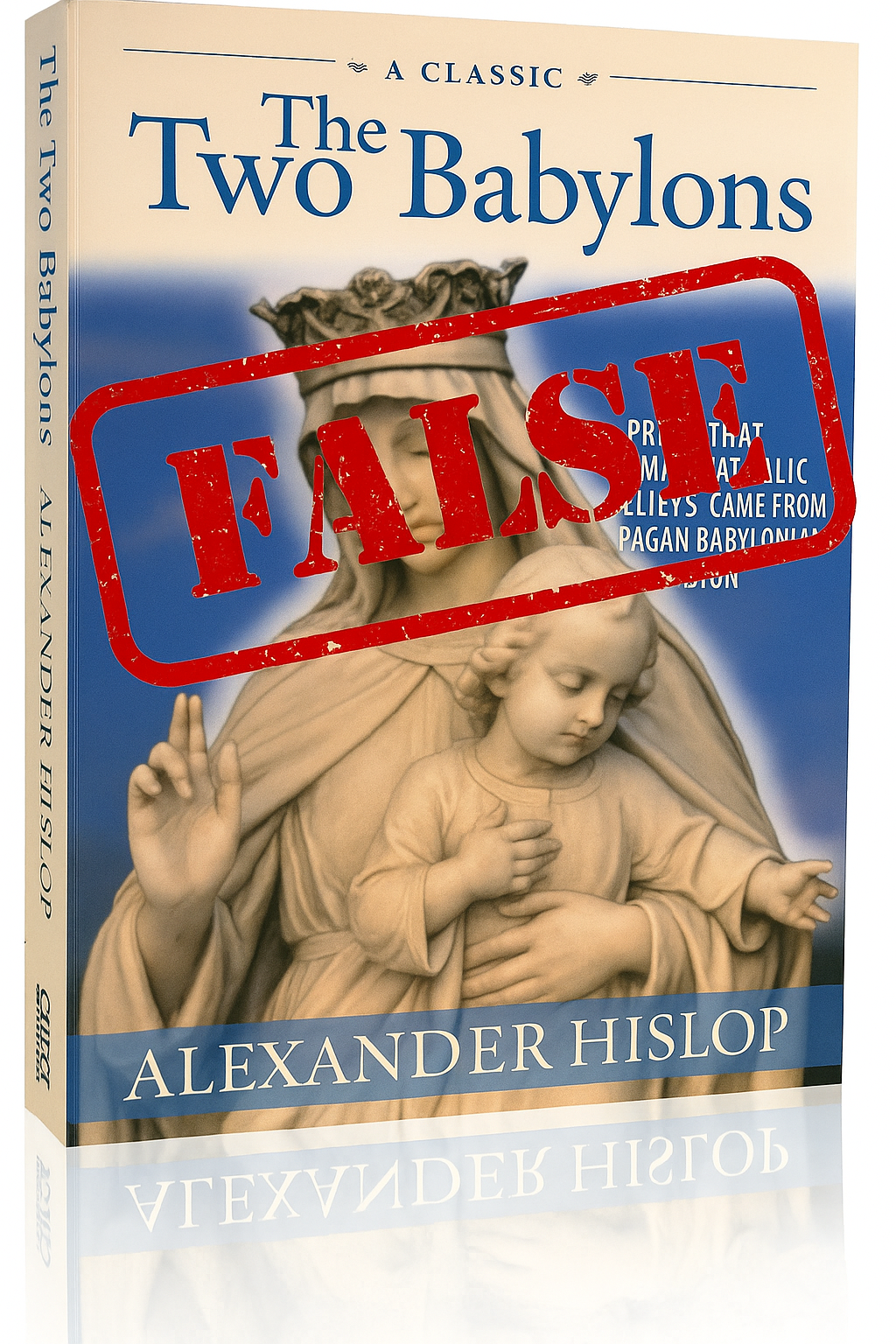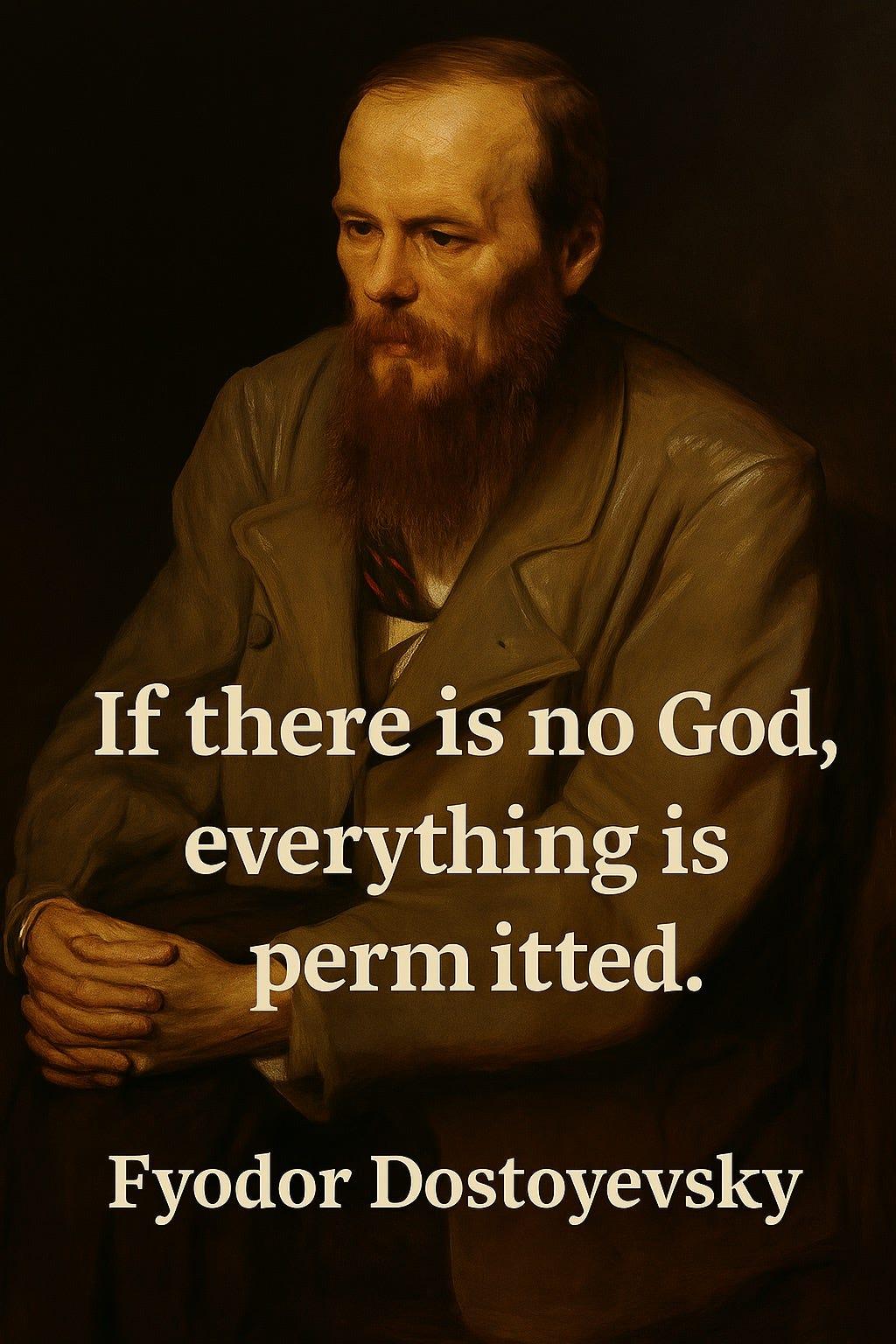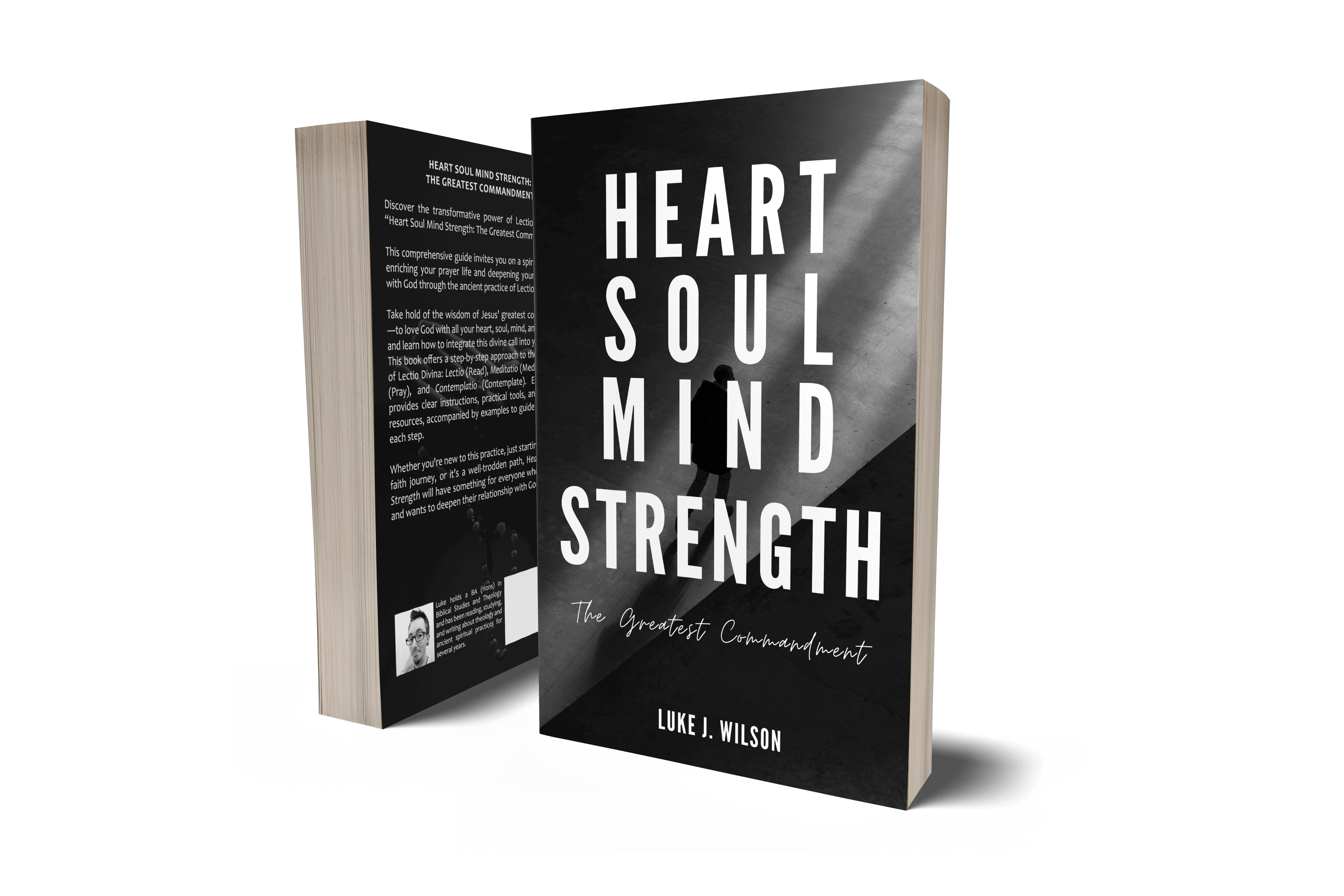The Historic Practice of Abortion and How Ancient Christians Responded

It’s no secret that the majority of Christians are against abortion, no matter where you look in the world. But nowhere has the issue come to more of a head than in the US recently with the overturning of Roe v Wade, which had made abortion legal across the country. Now abortion is no longer a federal constitutional right, but individual states now have the authority to determine the legality and rulings around abortion.
Christian opposition to abortion in America has always been a heated topic, especially in recent decades, but this isn’t a novelty within the Church in America, or globally, and has been a position of the faithful for about 2000 years. Even before Christianity, Judaism was opposed to abortion and infanticide, until about the 18th century when modernism greatly influenced religious thinking, and abortion became more acceptable in their view.
I’ve had people say to me “why can’t Christians be as progressive as the Jews?” in regards to views on abortion. Being “progressive” is all well and good, but it assumes we’re all intrinsically progressing towards something good or right. I don’t think that disregarding the value of life, and especially that of unborn children is necessarily progressing in the right direction. It baffles me that people think we are taking a step backwards by desiring to preserve the sanctity of life by viewing abortion as a moral issue, not a religious one.
Humans as icons of God
First and foremost, Christians have always held high respect for life and creation, a worldview inherited from Judaism. This is rooted in creation in Genesis where God has made humans in his image, and how we are called to be image-bearers of God; representatives of Him on Earth. But this “imaging” comes with the responsibility of preserving life as something precious, hence why unlawful killing was taken so seriously. We get a glimpse at how seriously God takes this very early on in Genesis 9:5–6,
For your own lifeblood I will surely require a reckoning: from every animal I will require it and from human beings, each one for the blood of another, I will require a reckoning for human life.
Whoever sheds the blood of a human, by a human shall that person’s blood be shed, for in his own image God made humans.
You might be familiar with the concept of “icons”; sacred and religious artwork that acts as a representative of the person or object depicted. In the Greek Old Testament (the Septuagint or LXX), the creation account of man as an image of God uses the Greek work εἰκόνα where we get our English word “icon” from. This same word and concept is also seen in the New Testament, though often translated as “image”.
Paul makes it clear that while we are icons of Adam now in our fallen state, in and through Christ we shall also be icons of Jesus (1 Cor. 15:49) being renewed back to that original image we were created to be (Col. 3:10) as imagers of God because Jesus is also the icon of God — his exact character and image (Heb. 1:3).
Colossians 1:15
He is the image [εἰκών] of the invisible God, the firstborn of all creation.
Hopefully, this explains a little more about why life is seen as precious and something to be protected.
Christian views on abortion, love and charity
Abortion is nothing new though, but the worldview that all life is precious was quite revolutionary in the ancient world. Christianity took this idea and really ran with it more than any other social or religious group of its time. Romans, and others, were often happy to look after their own… and by “their own”, I mean those in the same upper-class social groups who could repay the favour, as “charity” was to increase your own reputation and make people beholden to you. The poor and lower classes were seen as basically worthless and expendable since they could never repay any acts of charity.
This led to the common practice of the time known as “exposing children” — leaving unwanted babies on the side of the road or in rubbish dumps to die of exposure, either to the elements or wild animals. Christians were notorious for collecting and saving these children, adopting them into their own families and the support of the local churches. Tertullian (c. AD 197) speaks of pagans “exposing” their children and how they get taken up by compassionate passers-by if they get found in time. Children were often exposed, Lactantius (c. AD 304) explains, if the parents were “too pious” to strangle their newborn infant!
In 361, Roman Emperor Julian the Apostate wrote a letter to the pagan high-priest Arsacius complaining that the Christians were showing up the state by being too kind to everyone with their acts of charity!
…why do we not observe that it is their benevolence to strangers, their care for the graves of the dead and the pretended holiness of their lives that have done most to increase atheism [Christianity]? […] For it is disgraceful that, when no Jew ever has to beg, and the impious Galilaeans support not only their own poor but ours as well, all men see that our people lack aid from us. — Letters of Julian/Letter 22
Christian attitudes towards everyone truly encompassed the commands of Jesus to “love your neighbour” (Lev. 19:18, Matt. 22:39), to “love one another as I have loved you” (John 13:34–35), and to “love your enemies” (Matt. 5:44). This, along with Jesus’ harsh warnings about harming children (Luke 17:2, Matt 18:10–11), spilt over into society and began to reshape it by standing in stark contrast to the accepted behaviour of the day.
In the following years after the Apostles, other early church leaders continued to condemn and stand against the horrible practices their societies did to children, both unborn and born. And they weren’t subtle about it either!
Some of the earliest texts, contemporary to the New Testament, first mention abortion (or infanticide):
You shall not murder a child by abortion nor kill one who has been born. — Didache, c. AD 50–70
You shall not kill the child by obtaining an abortion. Nor, again, shall you destroy him after he is born. — Epistle of Barnabas, c. AD 70
This attitude towards what was seen as a repulsive and murderous practice continued to be written about and condemned by church leaders for centuries after this too.
[Christians] bear children, but they do no destroy their offspring. — Letter to Diognetus, c. AD 130
We say that those women who use drugs to bring on abortion commit murder. And we also say they will have to give an account to God for the abortion. — Athenagoras, c. AD 175
Although keeping parrots and curlews, the [pagans] do not adopt the orphan child […] they take up the young of birds. So they prefer irrational creatures to rational ones! — Clement of Alexandria, c. AD 195
To hinder a birth is merely a speedier way to kill a human. It does not matter if you take away a life that has been born, or destroy one that is not yet born. — Tertullian, c. AD 197.
Indeed, the Law of Moses punishes with appropriate penalties the person who causes abortion. For there already exists the beginning stages of a human being. — Tertullian, c. AD 210
The woman who purposely destroys her unborn child is guilty of murder. With us there is no nice enquiry as to its being formed or unformed. […] Women also who administer drugs to cause abortion, as well as those who take poisons to destroy unborn children, are murderesses. — Basil the Great, Letter 188: 2,8; c. AD 374
Conclusion
As you can see by the quotes and dates of when they were written, the high view of the sanctity of life and its relation to being made in the image of God has been the cornerstone of Christian belief for the last 2000 years. Even longer if you take into account Judaism’s history, too.
So it should come as no surprise that even today, Christians generally oppose the practice of abortion and its legality, and have despised modern laws in favour of it, such as the recently overturned Roe v Wade in the United States. There’s a lot more that could be said about the uniquely American situation, and how the country needs better social support to go alongside this decision, but space won’t allow for that here.
In today’s world, this issue has become highly charged and political, and even the worldwide Church isn’t as unified on this issue as it once was, historically speaking. Hopefully, people will come to reconsider their views on this emotional topic. It needs to be viewed as a moral and ethical issue around the life and death of an unborn child, and not merely a religious or political talking point. Neither should it be viewed as an abstract “right” or “healthcare” in which women are given the OK to put an end to the life forming within them, as though it were nothing but a nondescript, featureless “clump of cells”. The foetus quickly develops from any kind of plain cells into something more human within weeks of conception. The brain is beginning to grow at only 16 days and develops more between 6–7 weeks onward when the heart kicks into action too.
I am not so rigid to say there are no exceptions or cases where it truly would fall under the “healthcare” banner (such as ectopic pregnancies etc. where the mother and/or child’s life is endangered). But a new life, and a new body with its own DNA, soul and personhood, is growing from the start of conception. Under normal, healthy circumstances, this is the body that needs consideration when you make choices.
Further Reading
- Illustration of foetus development
- Abortionbrief.pdf (christian.org.uk)
- When Does a Fetus Develop a Brain? (healthline.com)
- Views about abortion among Christians — Religion in America: U.S. Religious Data, Demographics and Statistics | Pew Research Center
- What does ‘overturn Roe v. Wade’ mean? — nj.com
- Judaism and abortion — Wikipedia
- BBC — Religions — Judaism: Abortion
- What does Judaism teach about abortion? — Abortion — GCSE Religious Studies Revision — BBC Bitesize
- Letters of Julian/Letter 22
- How pagans viewed Christian charity | Acton Institute
- Greek Concordance: εἰκόνα (eikona) — 10 Occurrences (biblehub.com)
- Icon — Wikipedia
- CHURCH FATHERS: Letter 188 (St. Basil) (newadvent.org)
- The Didache | Patristics.info
- The Epistle Of Barnabas | Patristics.info
- Epistle of Mathetes to Diognetus | Patristics.info
Leave a comment Like Back to Top Seen 2.9K times Liked 0 times
Enjoying this content?
Support my work by becoming a patron on Patreon!
By joining, you help fund the time, research, and effort that goes into creating this content — and you’ll also get access to exclusive perks and updates.
Even a small amount per month makes a real difference. Thank you for your support!
Subscribe to Updates
If you enjoyed this, why not subscribe to free email updates and join over 853 subscribers today!
My new book is out now! Order today wherever you get books
Recent Posts
Luke J. Wilson | 6 days ago | Islam
You are not alone. Around the world, many Muslims — people who already believe in one God, pray, and seek to live righteously — are drawn to know more about Jesus (ʿĪsā in Arabic). Some have heard He is more than a prophet. Some have sensed His presence in a dream or vision. And some simply long to know God more deeply, personally, and truly. So what does it mean to become a Christian? And how can you take that step? This guide is for you. 1. What Christians Believe About God and Jesus ➤ One God, Eternal and Good Christians believe in one God — the same Creator known to Abraham, Moses, and the prophets. But we also believe God is more personal and relational than many realise. In His love, He has revealed Himself as Father, Son (Jesus), and Holy Spirit — not three gods, but one God in three persons. ➤ Jesus Is More Than a Prophet Muslims honour Jesus as a great prophet, born of the virgin Mary. Christians also affirm this — but go further. The Bible teaches that Jesus is the Word of God (Kalimat Allāh), who became flesh to live among us. He performed miracles, healed the sick, raised the dead — and lived without sin.Jesus came not just to teach but to save — to bring us back to God by bearing our sins and rising again in victory over death. 2. Why Do We Need Saving? ➤ The Problem: Sin All people — no matter their religion — struggle with sin. We lie, get angry, feel jealous, act selfishly, or fail to love God fully. The Bible says: “All have sinned and fall short of the glory of God.” (Romans 3:23) Sin separates us from God. And no matter how many good deeds we do, we can never make ourselves perfect or holy before Him. ➤ The Solution: Jesus Because God loves us, He did not leave us in our sin. He sent Jesus, His eternal Word, to live as one of us. Jesus died willingly, offering His life as a sacrifice for our sins, then rose again on the third day. “But God proves his love for us in that while we still were sinners Christ died for us.” (Romans 5:8) 3. How Do I Become a Christian? Becoming a Christian is not about joining a Western religion. It’s about entering a relationship with God through faith in Jesus Christ. Here is what the Bible says: ✝️ 1. Believe in Jesus Believe that Jesus is the Son of God, that He died for your sins, and that He rose again. “If you confess with your lips that Jesus is Lord and believe in your heart that God raised him from the dead, you will be saved.” (Romans 10:9) 💔 2. Repent of Your Sins Turn away from sin and ask God to forgive you. This is called repentance. It means being truly sorry and choosing a new way. “Repent therefore, and turn to God so that your sins may be wiped out.” (Acts 3:19) 💧 3. Be Baptised Jesus commands His followers to be baptised in water as a sign of their new life. Baptism represents washing away your old life and rising into a new one with Jesus. “Repent and be baptised every one of you in the name of Jesus Christ so that your sins may be forgiven.” (Acts 2:38) 🕊️ 4. Receive the Holy Spirit When you believe in Jesus, God gives you the Holy Spirit to live within you, guiding you, comforting you, and helping you follow His will. “You received the Spirit of adoption, by whom we cry, ‘Abba! Father!’” (Romans 8:15) 🧎 5. Begin a New Life As a Christian, you are born again — spiritually renewed. You begin to grow in faith, love, and holiness. You read the Bible, pray, fast, and gather with other believers. Your life is no longer your own; you now live for God. 4. What Does a Christian Life Look Like? Jesus said: “If anyone wants to become my followers, let them deny themselves and take up their cross and follow me.” (Matthew 16:24) This means: Loving God with all your heart Loving your neighbour — even your enemies Forgiving others ...
Luke J. Wilson | 05th May 2025 | Politics
When we think about David and Saul, we often focus on David’s rise to kingship or his battle with Goliath. But hidden within that story is a deep lesson for today’s generation about leadership, resistance, and the power of revolutionary love. At a recent youth training event (thanks to South West Youth Ministries), I was asked how I would present the story of David and Saul to a Christian teenage youth group. My mind turned to the politics of their relationship, and how David accepted Saul’s leadership, even when Saul had gone badly astray. David recognised that Saul was still God’s anointed king — placed there by God Himself — and that it was not David’s place to violently remove him. Gen-Z are more politically aware and engaged than previous generations, and are growing up in a world where politics, leadership, and social issues seem impossible to escape. We live in a world where political leaders — whether Trump, Putin, Starmer, or others — are often seen as examples of failed leadership. It’s easy to slip into bitterness, cynicism, or violent rhetoric. These kids are immersed in a culture of activism and outrage. As Christians, we’re called to care deeply about truth and justice and approach leadership differently from the world around us (Hosea 6:6; Isaiah 1:17; Micah 6:8). The story of David and Saul offers pertinent lessons for our modern lives. Respect Without Endorsement David’s respect for Saul was not blind loyalty. He did not agree with Saul’s actions, nor did he ignore Saul’s evil. David fled from Saul’s violence; he challenged Saul’s paranoia; he even cut the corner of Saul’s robe to prove he had the chance to kill him but chose not to. Yet throughout, David refused to take matters into his own hands by force. Why? Because David understood that even flawed authority ultimately rested in God’s hands, he trusted that God would remove Saul at the right time. This is echoed later in the New Testament when Paul writes in Romans 13 that “there is no authority except from God, and those authorities that exist have been instituted by God”, something even Jesus reminded Pilate of during his trial (John 19:10–11). In other words, even flawed leadership can be part of God’s bigger plan, whether for blessing or discipline. Even when leaders go bad, our call as believers is to maintain integrity, respect the position, and resist evil through righteousness — not rebellion. David and Saul: A Lesson in Respect and Restraint Saul was Israel’s first king — anointed by God but later corrupted by pride, fear, and violence. David, chosen to succeed him, spent years running for his life from Saul’s jealous rage. One day, David found Saul alone and vulnerable in a cave. His men urged him to strike Saul down and end the conflict. But David refused: “I will not raise my hand against my lord; for he is the Lord’s anointed.” (1 Samuel 24:10) Instead of killing Saul, David cut off a piece of his robe to prove he could have harmed him, but didn’t. In doing so, he demonstrated a real form of nonviolent resistance. He stood firm against Saul’s injustice without resorting to injustice himself, and acted in a way that could try to humble Saul instead. Peacemaking Is Not Passivity There is a modern misconception that peacemaking means doing nothing and just letting injustice roll all over us. But true biblical peacemaking is not passive; it actively resists evil without becoming evil. Interestingly, David’s actions toward Saul also foreshadow the type of nonviolent resistance Jesus later taught. When Jesus commanded His followers to turn the other cheek, go the extra mile, and love their enemies, he was not calling for passive submission but offering what scholar Walter Wink describes as a “third way” — a bold, peaceful form of resistance that uses what he calls “moral jiu-jitsu” to expose injustice without resorting to violenc...
Luke J. Wilson | 21st April 2025 | Easter
Over the years, I’ve encountered many Christians who’ve quoted from Alexander Hislop’s The Two Babylons as if it were a solid historical resource. The book claims that the Roman Catholic Church is not truly Christian but rather a continuation of ancient Babylonian religion. It’s self-assured and sweeping, and for many people, it seems to explain everything, from Marian devotion to Lent and Easter, to Christmas, as rooted in paganism. But is it accurate? In short: no, it really isn’t. Hislop’s work is a classic example of 19th-century pseudohistory — a polemical piece, written to prove a point, not to explore any historical truth. Flawed Methods and Wild Claims Hislop argues that most Catholic practices — from the Mass and clerical robes to festivals like Christmas and Easter — were somehow borrowed from Babylonian religion. The problem being that Hislop doesn’t rely on primary sources or credible historical data. Instead, he draws connections based on word similarities (like Easter and Ishtar) or visual resemblances (like Mary and child compared with mother-goddess statues from ancient cultures). But phonetic resemblance isn’t evidence, and neither is visual similarity. For example, if I say “sun” and “son” in English, they may sound alike, but they aren’t the same thing. That’s the level of reasoning at work in much of The Two Babylons. Hislop often lumps together completely different ancient figures — Isis, Semiramis, Ishtar, Aphrodite — as if they were all just variations of the same deity. He then tries to say Mary is just the Christian version of this pagan goddess figure. But there’s no credible evidence for that at all. Mary is understood through the lens of Scripture and Christian theology, not through pagan myth. The earliest depictions of Mary and the Christ-child date back to the second century and do not resemble any of the pagan idols. But, again, the common accusations are based on superficial similarities of a woman nursing a child. That’s going to look the same no matter who or what does that! Oldest depiction of Mary. Dura-Europos Church, Syria, 2nd century What About Lent and Tammuz? One of Hislop’s more popular claims is that Lent comes from a Babylonian mourning ritual for the god Tammuz, mentioned in Ezekiel 8:14. He argues that early Christians borrowed the 40-day mourning period and just rebranded it. But this doesn’t line up with the evidence. Lent developed as a time of fasting and repentance leading up to Easter — especially for new believers preparing for baptism. The number forty comes from Scripture: Jesus’ forty days in the wilderness, Moses’ fast on Sinai, and Elijah’s journey to Horeb. Church Fathers like Irenaeus and Athanasius saw it as a time for self-denial and spiritual renewal — not mourning a pagan god. Yes, there are pagan festivals that involve seasonal death and rebirth stories. But similarity does not mean origin. If that logic held, then even Jesus’ resurrection would be suspect because pagan cultures also told resurrection-like stories. Yet the gospel stands apart — not because of myth but because of history and revelation. Why Hislop’s Work Persists Even though The Two Babylons is poor scholarship, it’s unfortunately had a long shelf life. That’s partly because it appeals to a certain kind of suspicion. If you’re already sceptical about the Catholic Church, Hislop offers an easy explanation: “It’s all pagan!”. But history isn’t ever that simple. And theology — especially the theology handed down through the ages by the faithful— isn’t built on conspiracy and apparent obscure connections, but on Christ and the truth of the Scriptures. Interestingly, even Ralph Woodrow, a minister who once wrote a book defending Hislop’s ideas, later retracted his views after digging deeper into the evidence. He eventually wrote a book called The Babylon Connect...
Darwin to Jesus | 16th April 2025 | Atheism
Guest post by Darwin to Jesus Dostoevsky famously said, “If there is no God, then everything is permitted.” For years, as an atheist, I couldn’t understand what he meant, but now I do… Here’s a simple analogy that shows why only theism can make sense of morality: Imagine you just got hired at a company. You show up, set up your desk, and decide to use two large monitors. No big deal, right? But then some random guy walks up to you and says: “Hey, you’re not allowed to do that.” You ask, “What do you mean?” They say, “You’re not permitted* to use monitors that big.” In this situation, the correct response would be: “Says who?” We’ll now explore the different kinds of answers you might hear — each one representing a popular moral theory without God — and why none of them actually work. Subjective Morality The random guy says, “Well, I personally just happen to not like big monitors. I find them annoying.” Notice that’s not a reason for you to change your setup. Their personal preferences don’t impose obligations on you. This is what subjective morality looks like. It reduces morality to private taste. If this were the answer, you’d be correct to ignore this person and get back to work — big monitors are still permitted. Cultural Relativism Instead, they say, “It’s not just me — most people here don’t use big monitors. It’s not our culture.” That’s cultural relativism: right and wrong are just social customs, what is normal behavior. But notice customs aren’t obligations. If the culture were different, the moral rule would be different, which means it isn’t really moral at all. You might not fit in. You might not be liked. But you’re still permitted to use big monitors. Emotivism Here after being asked “says who?” the person just blurts out, “Boo, big monitors!” You reply, “Hurrah, big monitors!” That’s the entire conversation. This is emotivism. On this moral theory when we talk about right and wrong we’re actually just expressing our personal feelings towards actions, I boo rape, you hurrah rape. But shouting “boo!” at someone doesn’t create real obligations. You’re still permitted to use large monitors. Utilitarianism Here, the person says, “Your big monitors lower the overall productivity of the office. You’re not permitted to use them because they lead to worse consequences.” This is utilitarianism: morality is based on producing the greatest happiness for the greatest number. But even if that’s true — so what? Who says you’re obligated to maximize group productivity? And what if your monitors actually help you work better? Utilitarianism might tell you what leads to better outcomes, but it doesn’t tell you why you’re morally obligated to follow that path — especially if it comes at your own expense. You’re still permitted to use large monitors. Virtue Ethics Here they say, “Using big monitors just doesn’t reflect the virtues we admire here — simplicity, humility, restraint.” This is virtue ethics. Morality is about becoming the right kind of person. But who defines those virtues? And why are you obligated to follow them? What if your idea of a virtuous worker includes productivity and confidence? Without a transcendent standard, virtues are just cultural preferences dressed up in moral language. If you don’t care about virtue or their arbitrary standards, then you have no obligation. You’re still permitted to use large monitors. Atheist Moral Realism But what if they say, “Listen, there’s a rule. It’s always been here. It says you can’t use monitors that large.” You ask, “Who made the rule?” They say, “No one.” You ask, “Who owns this company?” They say, “No one owns it. The company just exists.” You look around and ask, “Where is the rule?” They say, “You won’t find it w...










